
1N4001 vs1N4002 Diode: Datasheet, Price
yunying Release time:2023-09-28 Page View:399
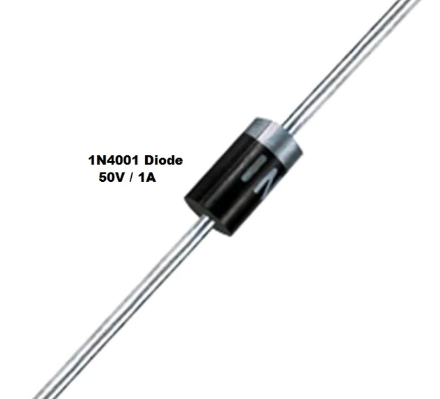
Introduction

1N4001 and 1N4002 are Two commonly used diodes. In this article, we will compare these diodes based on their datasheets, prices, as well as their advantages and disadvantages. This analysis aims to help you make an informed decision when selecting the appropriate diode for your circuit.
What is 1N4001?
1n4001 phase diode rectifier is used to reverse the voltage to 50V in this scenario. The device’s average rectified current is zero volts, and a forward current of up to 1A is permissible. The rectifier has a current rating of 1A, which is the maximum current that a fuse can handle without significant degradation. Surge currents are limited to 30A. According to the datasheets, the peak reverse current is 10μA. Diodes define their breakdown voltage as the maximum reverse voltage that can be applied without causing a significant increase in leakage current. In this case, the breakdown voltage of the diode is 50V.
What is 1N4002?
In this setup, 1n4002 phase diode rectifier is utilized to reverse the voltage to 50V. The device’s average rectified current is zero volts, and it can handle a forward current of up to 1A. The rectifier is rated for a maximum current of 1A, which is the threshold beyond which a fuse might experience excessive degradation. Surge currents are capped at 30A. As per the datasheets, the peak reverse current is specified at 10μA. Diodes define their breakdown voltage as the maximum reverse voltage that can be applied without triggering a substantial increase in leakage current. For this diode, the breakdown voltage is set at 50V.
1N4001 vs1N4002 Pinout
1N4001 Pinout:
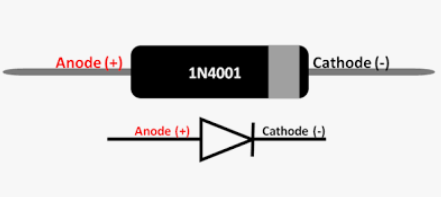
1N4002 Pinout:
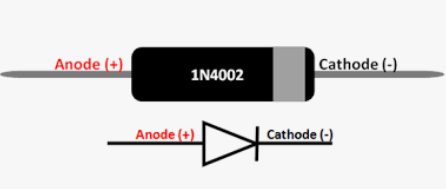
1N4001 vs1N4002 3D-Model
Symbol

Footprint
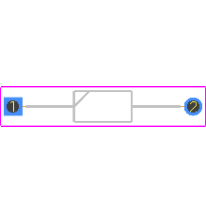
3D-Model
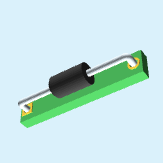
Key specifications Comparison
Datasheet :
The 1N4001 and 1N4002 diodes are both part of the 1N400x series and share many similarities. Here is a comparison of their key specifications:
Maximum Average Forward Current:
1N4001: 1A
1N4002: 1A
Maximum Peak Reverse Voltage:
1N4001: 50V
1N4002: 100V
Forward Voltage Drop:
1N4001: Typically 0.7V
1N4002: Typically 0.85V
Based on these specifications, the 1N4002 diode has a higher peak reverse voltage rating, making it suitable for applications that require higher voltage handling capabilities.
Price Comparison:
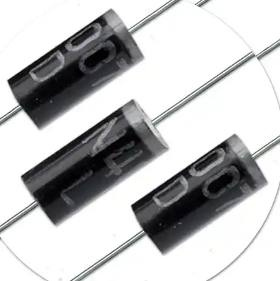
The prices of diodes can vary depending on factors such as manufacturer, quantity, and availability. Generally, the 1N4001 diode is more widely available and tends to be more affordable compared to the 1N4002 diode. However, it is important to consider the specific requirements of your circuit and balance cost-effectiveness with the desired performance.
But basically their price is around US $2.04/ea, if you have any question please send RFQ because 1N4001 price and 1N4002 price are negotiable.
Advantages and Disadvantages
1N4001 Advantages :
Lower forward voltage drop, resulting in lower power losses.
More widely available and lower cost.
1N4001 Disadvantages :
Lower peak reverse voltage rating, limiting its use in higher voltage applications.
1N4002 Advantages :
Higher peak reverse voltage rating, enabling it to handle higher voltage levels.
Suitable for applications requiring higher voltage rectification.
1N4002 Disadvantages :
Slightly higher forward voltage drop, leading to slightly higher power losses.
Generally, a bit more expensive compared to the 1N4001.
Conclusion
When choosing between the 1N4001 and 1N4002 diodes, it is important to consider the specific requirements of your circuit. The 1N4001 is a cost-effective option with a lower forward voltage drop, making it suitable for lower voltage applications. On the other hand, the 1N4002 offers a higher peak reverse voltage rating, allowing it to handle higher voltage levels. However, it comes at a slightly higher cost and exhibits a slightly higher forward voltage drop.
Related articles
Specifications
- Manufacturer :
- Fairchild Semiconductor
- Product Category :
- Diodes - Rectifiers - Single
- Average Rectified Current :
- 1A
- Base Part Number :
- 1N4001
- Breakdown Voltage :
- 50V
- Contact Plating :
- Tin
- Current - Average Rectified (Io) :
- 1A
- Current - Reverse Leakage @ Vr :
- 10μA @ 50V
- Current Rating :
- 1A
- Diameter :
- 2.7mm
- Diode Type :
- Standard
- Element Configuration :
- Single
- Factory Lead Time :
- 4 Weeks
- Forward Current :
- 1A
- Forward Voltage :
- 1.1V
- Halogen Free :
- Halogen Free
- Height :
- 5.2mm
- Lead Free :
- Lead Free
- Length :
- 5.1816mm
- Lifecycle Status :
- ACTIVE (Last Updated: 3 days ago)
- Max Forward Surge Current (Ifsm) :
- 30A
- Max Operating Temperature :
- 150°C
- Max Repetitive Reverse Voltage (Vrrm) :
- 50V
- Max Reverse Voltage (DC) :
- 50V
- Max Surge Current :
- 30A
- Min Operating Temperature :
- -65°C
- Moisture Sensitivity Level (MSL) :
- 1 (Unlimited)
- Mount :
- Through Hole
- Mounting Type :
- Through Hole
- Number of Pins :
- 2
- Operating Temperature - Junction :
- -65°C~175°C
- Output Current :
- 1A
- Package / Case :
- DO-204AL, DO-41, Axial
- Packaging :
- Bulk
- Part Status :
- Active
- Peak Non-Repetitive Surge Current :
- 30A
- Peak Reverse Current :
- 10μA
- Polarity :
- Standard
- Published :
- 1998
- Radiation Hardening :
- No
- REACH SVHC :
- No SVHC
- Reverse Voltage :
- 50V
- RoHS Status :
- ROHS3 Compliant
- Speed :
- Standard Recovery >500ns, > 200mA (Io)
- Supplier Device Package :
- DO-41
- Voltage - DC Reverse (Vr) (Max) :
- 50V
- Voltage - Forward (Vf) (Max) @ If :
- 1.1V @ 1A
- Voltage - Rated DC :
- 50V
- Weight :
- 4.535924g
- Width :
- 6.35mm
Datasheets
- Datasheets
- 1N4001

Frequently Asked Questions
What is 1N4001 used for?
The 1N4001 is a rectifier diode that is commonly used in electronic circuits. It is part of the 1N400x series of diodes, which are widely used for general-purpose rectification of alternating current (AC) to direct current (DC) in various applications.
Can I replace 1N4007 with 1N4001?
If you need to replace a 1N4007 diode with a different one, you should choose a diode with a similar or higher voltage rating to ensure proper functioning and avoid potential damage to your circuit.
What is the voltage of 1N4001?What is the rating of 1N4001?
The 1N4001 diode has a lower voltage rating compared to the 1N4007 diode. While the 1N4007 has a maximum repetitive reverse voltage rating of 1000 volts, the 1N4001 has a maximum repetitive reverse voltage rating of only 50 volts. Therefore, the 1N4001 is not suitable as a direct replacement for the 1N4007 in applications that require higher voltage handling capabilities.
-
1,000+Daily Order Quantity
-
2,500,000+Alternative Parts
-
2,200+Worldwide Manufacturers
-
10,000 ㎡In-stock Warehouse


























